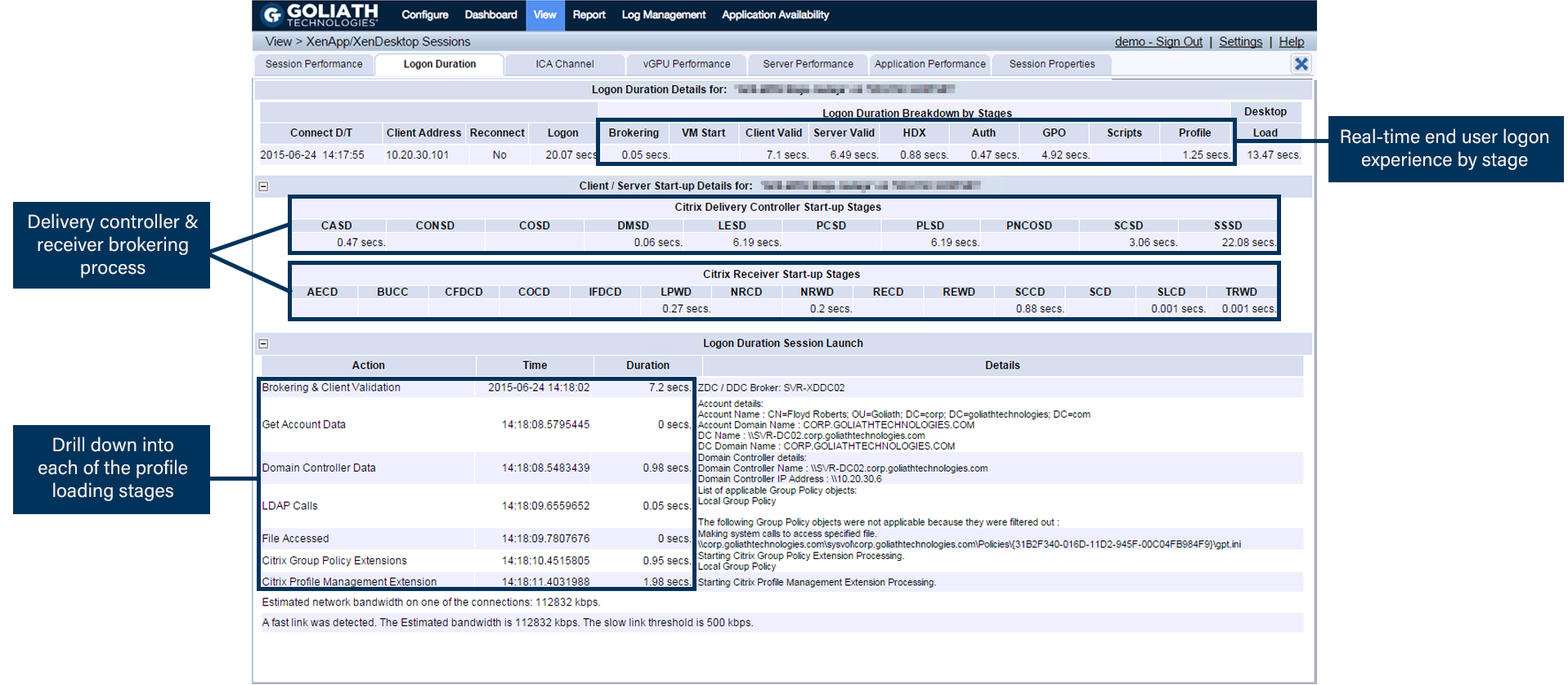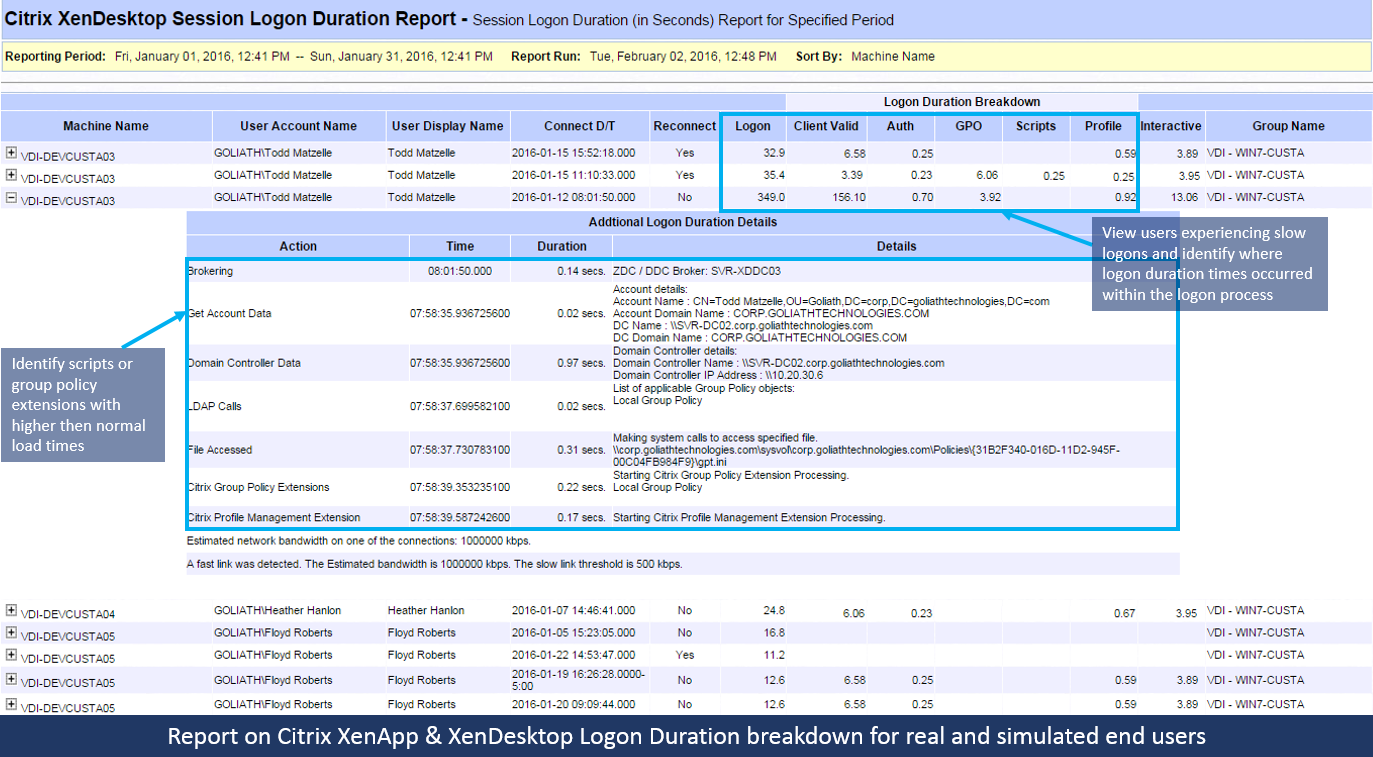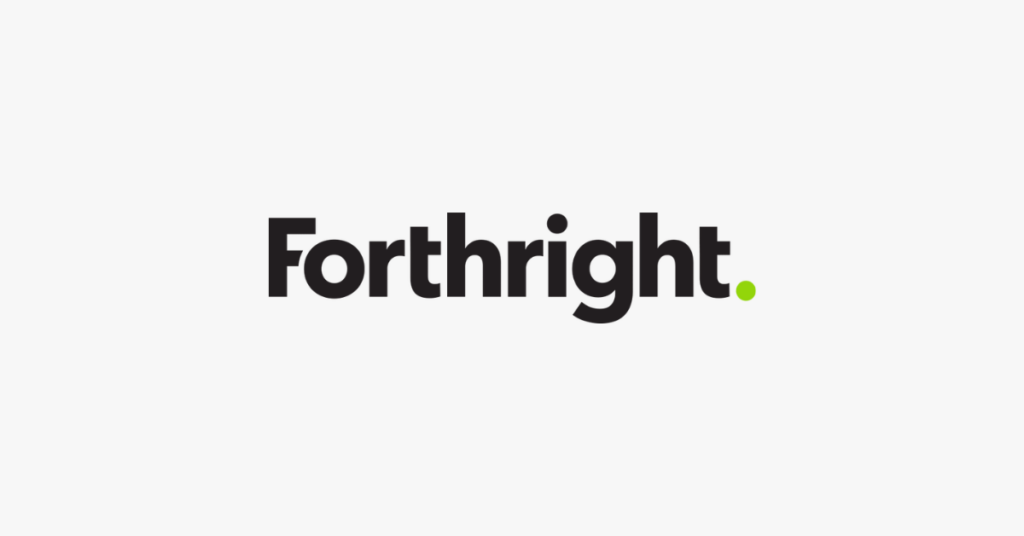Forthright
Forthright Hits 99.9% Uptime SLAs with Goliath

“Goliath enables us to proactively prevent about 70 Citrix support tickets per day. Their Citrix XenApp Monitoring & Troubleshooting provides us with a centralized view of Citrix, our virtual infrastructure and correlates this with real time end user experience metrics. Coupled with the fact that they have proactive logon simulation functionality, is why we selected Goliath as a critical component in our managed services offerings.” – Ricardo Ceballos, Director of Enterprise Managed Services, Forthright
As an enterprise managed service provider (MSP), Forthright offers SLAs that are unique to each customer. All of which are focused on maintaining uptime and performance at 99.9% while delivering a positive end user experience. They were facing a challenge as their current XenApp Monitoring Vendor, N-Able, couldn’t provide a way to proactively predict Citrix logon experience and troubleshoot logon failures or slowness. With an infrastructure consisting of VMware, Citrix XenApp, XenDesktop 7.6 they knew they needed a purpose-built tool that would enable them to hit the 99.9% uptime mark on all customer SLAs.
Infrastructure
VMware, Citrix XenApp, XenDesktop 7.6
Challenge
Over the past few years, Forthright has experienced significant demand for their managed services. Many of these clients depend on Citrix to access their mission-critical applications, so tools purpose-built for Citrix XenApp monitoring and troubleshooting were required. These customers wanted commitments or SLAs from Forthright relative to uptime and good end user experience. So the technical team decided they needed specific functionality that would allow them to determine if there is a problem with Citrix Logon Initiation and Logon Duration–before end users were impacted.
In looking for a solution, Forthright’s technical team evaluated a myriad of XenApp monitoring products. To ensure success, there were two crucial elements the XenApp monitoring solution needed to address:
- Proactive and/or Preemptive LogonFailure or Slowness Alerting: There are a few products that can tell if something failed after the fact, but they needed something to give them advance warning before end users were impacted. Real-time XenApp monitoring, alerting on thresholds, events, and failures relative to Citrix logons was something that they deemed critical to ensure that performance-based SLAs are met when offering Remote Infrastructure Monitoring (RIM) and Desktop as a Service (DaaS).
- Root Cause Analysis and Citrix XenApp Troubleshooting: This is largely a byproduct of the above limitation. Most XenApp monitoring and troubleshooting offerings don’t provide real-time alerting on logon issues because their products simply don’t see or monitor the failure points. They don’t go deep or broad enough into the Citrix XenApp and virtualization layers. As RicardoCeballos, Director of Enterprise Managed Services puts it, “If a XenApp monitoring product can’t see an IT element, then it can’t monitor, alert, or isolate that IT element as the root cause. Simply alerting me that something went wrong – after the fact – and without the detail to isolate and document root cause – is just not helpful.”
Solution
Goliath Application Availability Monitor (GAAM) for Citrix and Logon Duration Troubleshooting was implemented to help Forthright achieve 99.9% uptime on their SLAs.
GAAM for Citrix XenApp and XenDesktop was deployed to customer locations and was used both on-premises and remotely to ensure that Citrix applications and desktops would launch. In the image above, you can see the real-time dashboard that displays each logon attempt and whether it was a success or failure.
It is the only technology they could find that conducts simulations such that it confirms the entire Citrix Delivery Infrastructure would work. It tests the NetScaler, Storefront, Delivery Controller, VDI and XenApp Server. This technology will send alerts in real time if there is a failure and is offered both as an on-premises software or a hosted service.
This technology provided great value to Forthright beyond simply its preemptive alerting capabilities. GAAM for Citrix eliminated the need to manually confirm Citrix Applications would launch, saving up to 3 hours per environment per day. Utilizing Goliath, this process is automated and has been reduced to 30 minutes.
They also use the reporting capability of the product to run historical reports for analysis of the overall success or failure of the Citrix Logons or to drill down by user. The report below is an example.
Many times the logon initiation process was successful, but the logon process was sluggish. In this case, Forthright used the logon duration drill down which dissects 33 different, though interrelated, steps in the logon process as depicted below. Armed with this logon duration detail they were able to pinpoint the true root cause of logon duration slowness and resolve the issue permanently—before end user performance is impacted.
Real-time Citrix Logon Duration Drill Down
Citrix XenApp & XenDesktop Logon Duration Report
Forthright needed to run historical reports and analysis to determine long-term performance trends enabling them to be proactive in managing customers’ environments. The requirement was to have the necessary reports available out-of-the-box. Armed with this data, they could tune Goliath’s XenApp monitoring software to send threshold-based alerts and simultaneous remediation actions before end users were affected.
Results
The Forthright team was also pleased to find out that Goliath has 66 of these types of performance and end user experience reports for Citrix and VMware, all of which come out-of-the-box with Goliath’s XenApp Performance Monitoring product.
Based on Forthright’s selection criteria to proactively manage end user experience and meet their SLAs with a purpose-built solution for Citrix XenApp monitoring, Goliath was the clear solution.
In addition to the two core requirements listed above, Goliath Technologies offered additional features that were specifically designed for Service Providers that were helpful in making a decision and having the product become a success:
- Multi-tenancy: MSPs can use Goliath to proactively manage environments by criteria such as customer, location, application, infrastructure, etc.
- Master “Intelligent” Agent: This is an ultra-low resource utilization (0.1% CPU) agent to monitor remote locations without maintaining an external connection. The “Intelligent” Agent gathers numerous metrics like the ICA/HDX channel and the hypervisor, and it can execute remediation actions on XenApp Servers, XenDesktop VDI, Citrix role servers, and end points.
- MSP Management: Centralized management of the end user experience for MSPs.
- Share Data with other Tools: Can send Citrix XenApp monitoring and troubleshooting data to Nimsoft, SolarWinds, etc.
- Custom Reporting: Real-time dashboards and historical reports that are branded with Forthright’s logo.
As you can see from the above screenshots, Forthright is able to use Goliath Performance Monitor for XenApp Monitoring and the GAAM for Citrix to gain complete visibility into the end users’ logon experience in a single view.
Instantly Download this New Complete Guide to Understanding the Citrix Logon Process for XenApp/XenDesktop
In this free how-to troubleshooting guide to solving Citrix logon issues, a Citrix Engineer breaks down each step of the complex Citrix logon process. The guide explains all 33 stages of the Citrix logon sequence and the role each stage plays in delivering a successful logon. You will also learn the challenges inherent in isolating the specific stage/stages causing slow or failed Citrix logons so you can improve end user experience.





